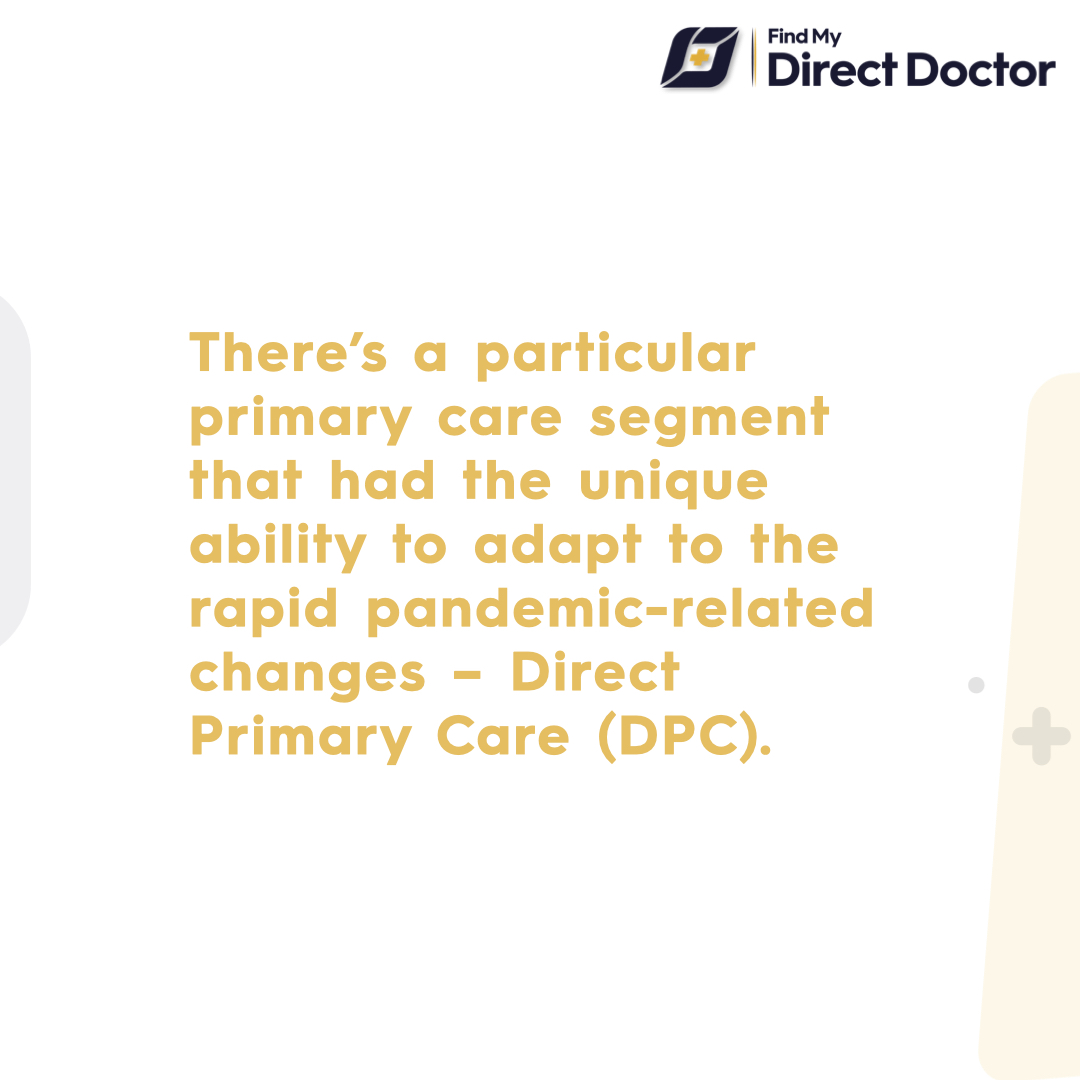



The COVID-19 pandemic has exposed crucial weaknesses in the American healthcare system. It didn’t simply reveal that the emergency rooms in American hospitals are easily overwhelmed, it also demonstrated how critically flawed the fee-for-service (FFS) medical billing system indeed was.
The lockdowns stirred up a perfect storm that wreaked havoc, particularly on traditional insurance-based practices. While medical resources and personnel were forced to concentrate on the pandemic, the rest of the medical industry suffered.
The rising unemployment effectively made it impossible for people to afford the ever-increasing insurance premiums. The lockdowns also made elective procedures and non-COVID-related visits impossible to do.
These factors played a huge part in the 1.5 million jobs lost in the healthcare industry in the span of 2 months from March to April of 2020. From administrative positions to nurses, lost many jobs in the private practice and primary care services in the chaos of the pandemic.
But there’s a particular primary care segment with the unique ability to adapt to the rapid pandemic-related changes – Direct Primary Care (DPC). In many cases, DPC practices even prospered during the weeks when non-COVID visits to the clinic were discouraged.
Well-Positioned for the New Normal
One of the benefits of DPCs over FFS practices is that they’re particularly well-adapted to new technologies. Telehealth consultations, for example, were encouraged in DPC practices even before the pandemic ever hit American shores.
As doctor salaries are not predicated on the number of patients they see each month. Instead, their salaries are dictated by how many patients they sign up and retain for their practice.
Doctors in a DPC practice are also allowed to do quick consultations over the phone and other means of communication. For example, patients can text their direct primary care doctors the symptoms for simple consults and get a quick reply. In this case, the resulting doctor-patient interaction increases efficiency and decreases potential exposure to COVID-19 for both parties.
The subscription to a DPC practice was significantly lower compared to a lot of health insurance premiums. Because of this, DPCs also helped a lot in keeping people who suffered job losses healthy during the crucial periods of the pandemic.

Financial Stability
The lack of documentary requirements needed to submit to insurance companies has reduced the administrative workload of DPC practices. Administrative staff, therefore, can be kept at a minimum while still maintaining operational efficiency. The decreased workload gives DPCs the ability to keep overhead costs low.
For patients, the lower overhead helps keep the cost of the monthly subscription low as well. This is because the fees go straight to the practice instead of going to a third-party insurance company.
In the pandemic where the United States experienced massive job losses, these lowered healthcare costs can make a difference in keeping Americans experiencing hardships cared for.
Another issue that most traditional FFS institutions faced during the pandemic is a sudden drop in inpatient visits because of the lockdown. This effectively curtailed their income which was what primarily cost a lot of healthcare workers their jobs.
With the DPC subscription model, healthcare facilities get an assured income whether patients decide to come in for a consult or not. This is because the practice’s income does not rely on the number of visiting patients. This gives DPC practices more stability compared to traditional FFS models, especially in crucial periods such as pandemics.
Practice Autonomy
Because there is no middleman in a DPC practice, doctors can provide healthcare the way they saw fit and not how insurance companies dictated. This is because insurance companies incentivize doctors to order tests and medicines that would drive the price up as it is the most profitable way to operate.
FFS practices also require doctors to accomplish a lot of administrative grunt work for each consult. Between the hundreds of patients that doctors see each day and the paperwork, they have to accomplish for each one, working in an FFS practice can drain a doctor’s energy and motivation.
The lack of oversight from third-party insurance companies also means added flexibility for DPC practices. And most DPC practices were quick to capitalize on this flexibility by launching specific services and packages exceptionally crafted to combat COVID-19. For example, home care services for asymptomatic and persons with mild symptoms were quickly provided by DPC doctors.
The increased quality of the doctor-patient relationship also came in handy during the pandemic by giving patients access to COVID-19 test kits. As a result, DPC practices could assess their patients’ symptoms remotely and procure and deliver test kits if their patients pass the CDC criteria.
Essentially, the switch to DPC practice can give doctors freedom from oversight and relief from paperwork. This effectively lets them practice medicine the way they see fit and still have time to do what they love after they clock out from seeing patients.
Those reasons alone are enough for Direct Primary Care to get our vote of confidence. Do you think you would benefit from a DPC doctor? We have the most extensive collection of DPC doctors in the US. Find your nearest DPC doctor in your area today at – findmydirectdoctor.com